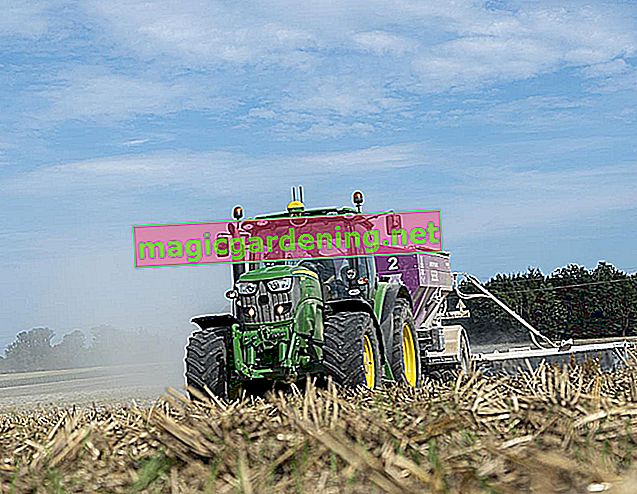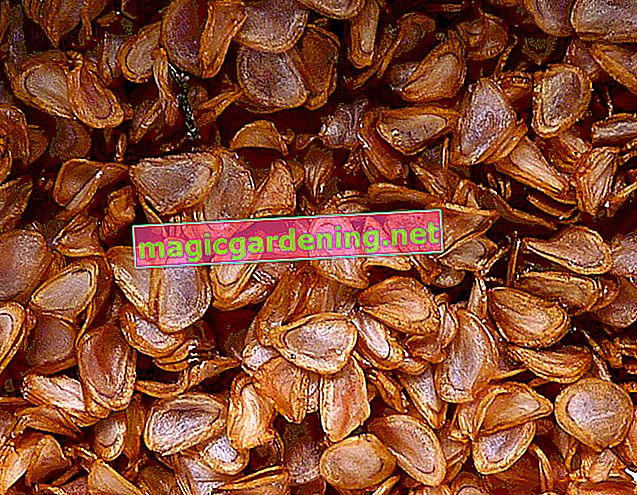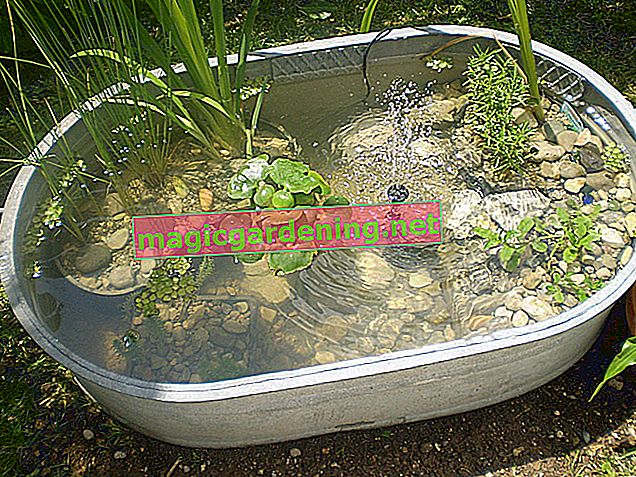
Why and how to lime fruit tree trunks
From mid-January, but no later than February, the tree trunks on the south side start to warm up on sunny days, while the temperatures drop sharply in the subsequent clear nights. This creates tension in the bark tissue, which ultimately leads to frost cracks. So-called frost plates - whereby parts of the bark tissue dry out - are the consequences of strong sunlight and extreme temperature fluctuations. To protect the fruit trees from this damage, spread a lime broth preventively. You can add a bit of wallpaper paste to this for better adhesion, or you can purchase a finished lime or white coating from specialist shops. Incidentally, such a lime paint does not protect against pest infestation or game bites, it only reflects the sun's rays.
also read
- Liming the tree trunk and protecting it from diseases
- Prevent frost damage to the hemp palm
- Maple with frost damage - what to do?
This is how you recognize frost and cold damage
Typical frost damage is the cracks in the bark on trunks and branches, which in severe cases form deep crevices or flake off like plates. You also acknowledge frost damage:
- shoot tips turning dark brown to blackish
- dead shoot tips
- Plants dead from frozen roots
- discoloring leaves (yellow, reddish, sometimes also brown to black)
- browning buds and flowers
- Fruits with brown, black, rusty or glassy areas, longitudinal cracks or rings in the calyx region
In such cases, you usually only have to cut off the affected parts or even clear the whole tree. Fruit trees that regenerate as a result of new shoots can simply be cut back vigorously into healthy wood in spring.
This also prevents frost damage
In addition to a lime coating, you can also protect your fruit trees from frost damage by taking the following measures:
- For espalier fruit, choose preferably south-east, south-west or light east walls, not blazingly sunny south walls.
- In the case of freshly planted and sensitive woody plants, cover the root area as well as the stem and shoot base with leaves and / or spruce branches.
- Place hibernating potted trees outside on insulating styrofoam sheets or boards.
- Make sure you have a sufficient supply of potassium, as this increases winter hardiness.
- Do not use nitrogen-based fertilization in late summer.
- Do not prune fruit trees at temperatures below minus five degrees Celsius.
Tips
If you forget to chalk it, put a board on the south side of each tree trunk. This also keeps out the sun's rays.








